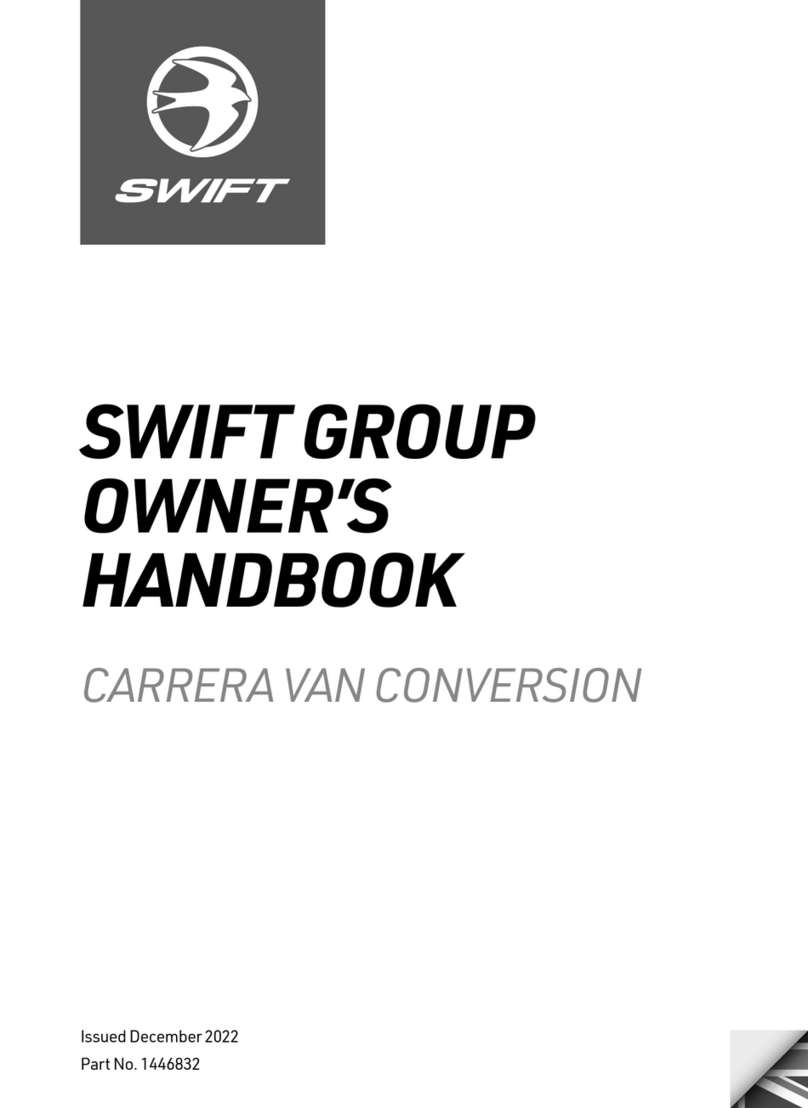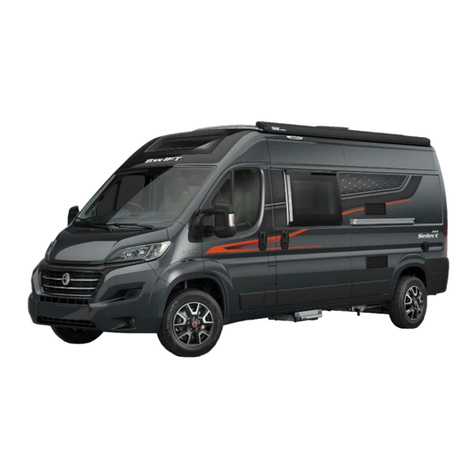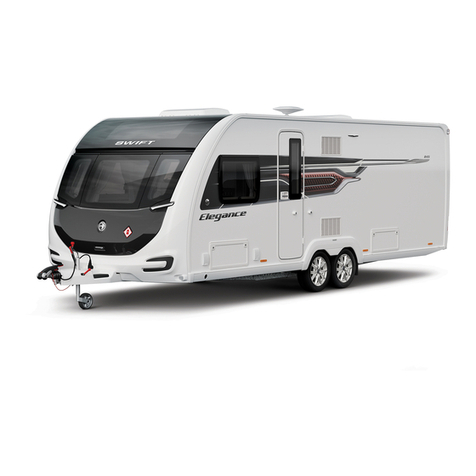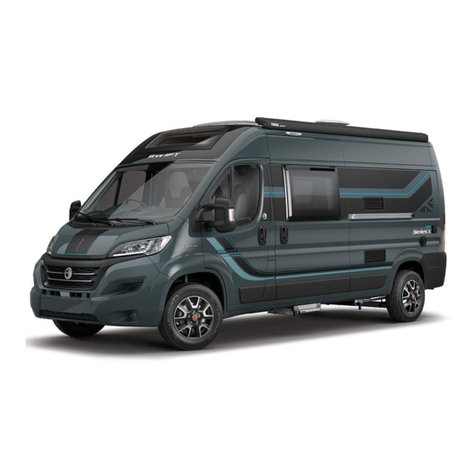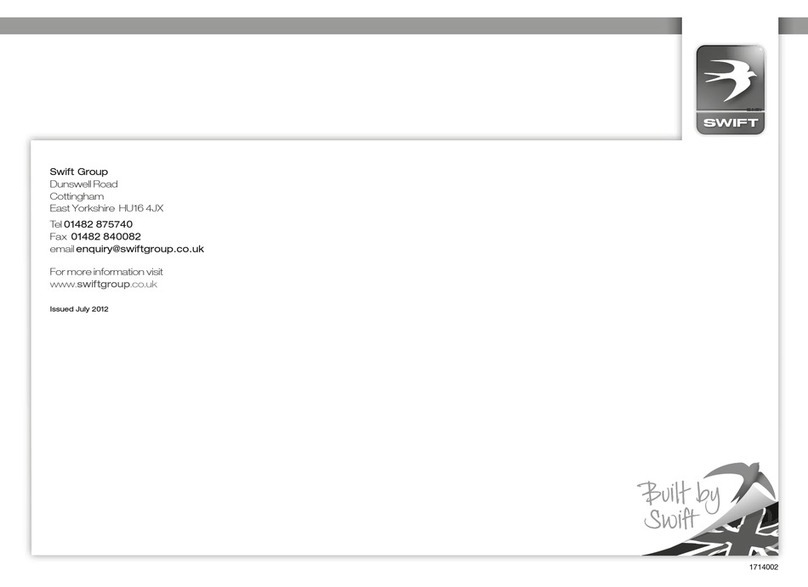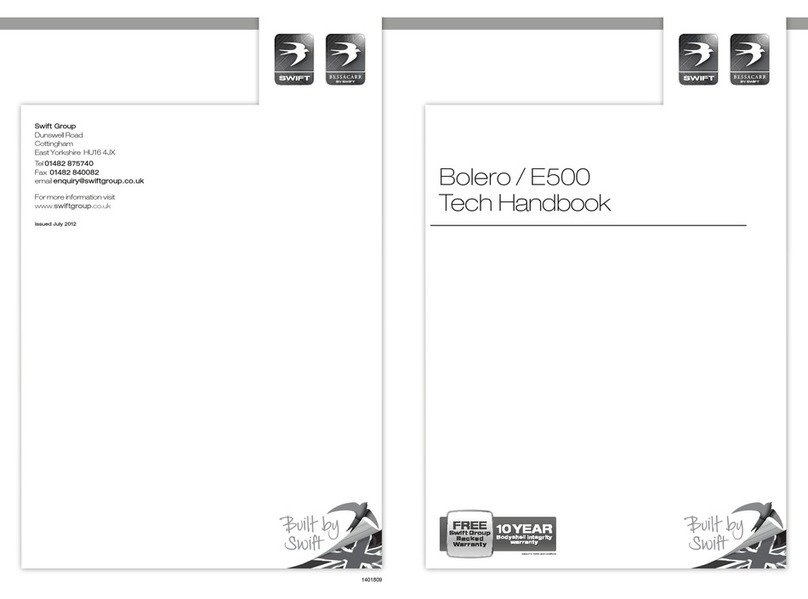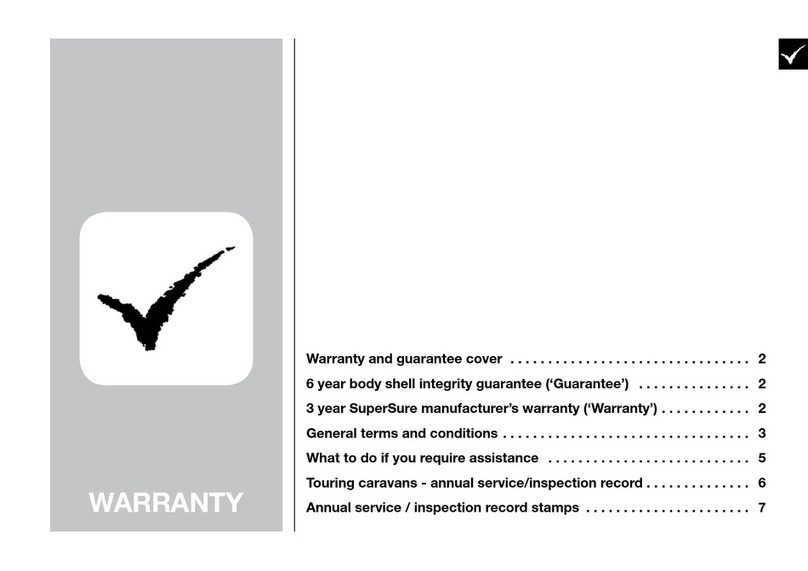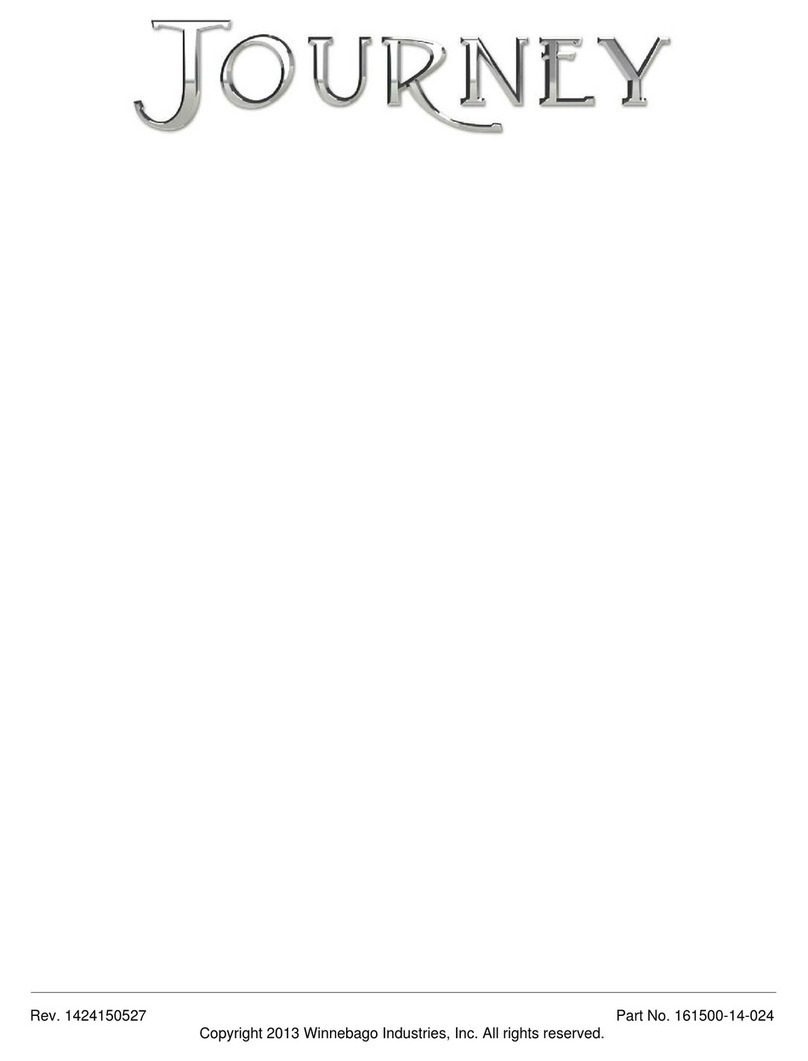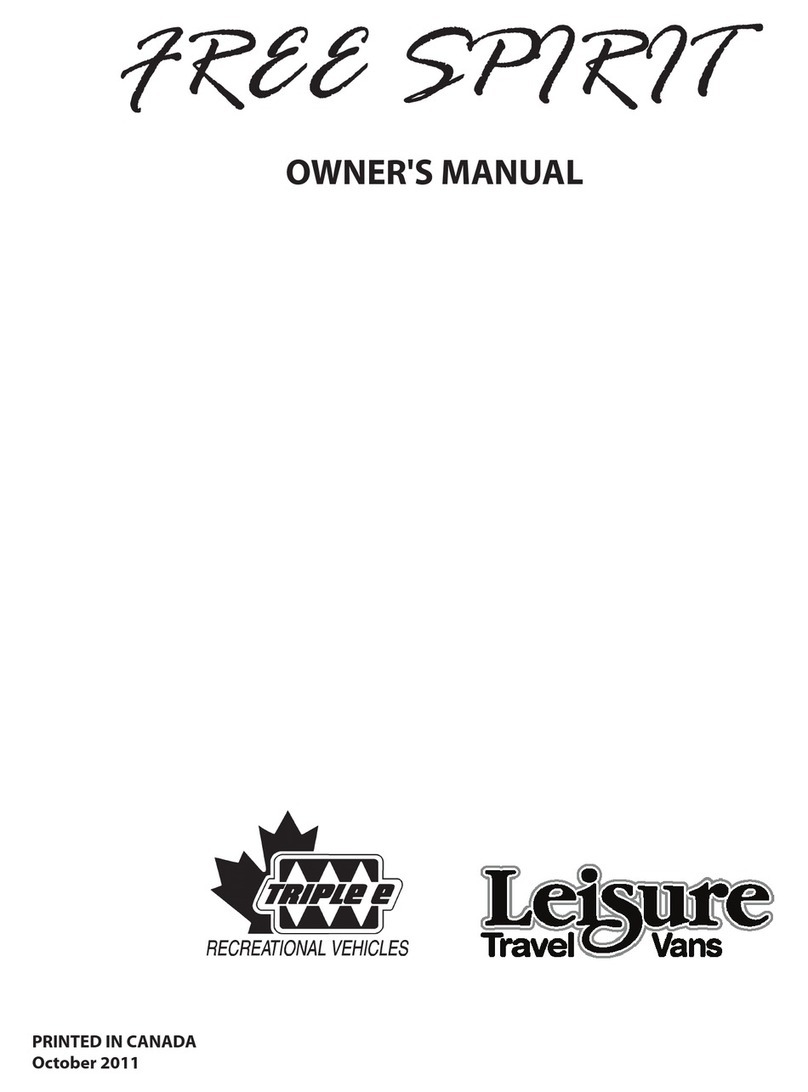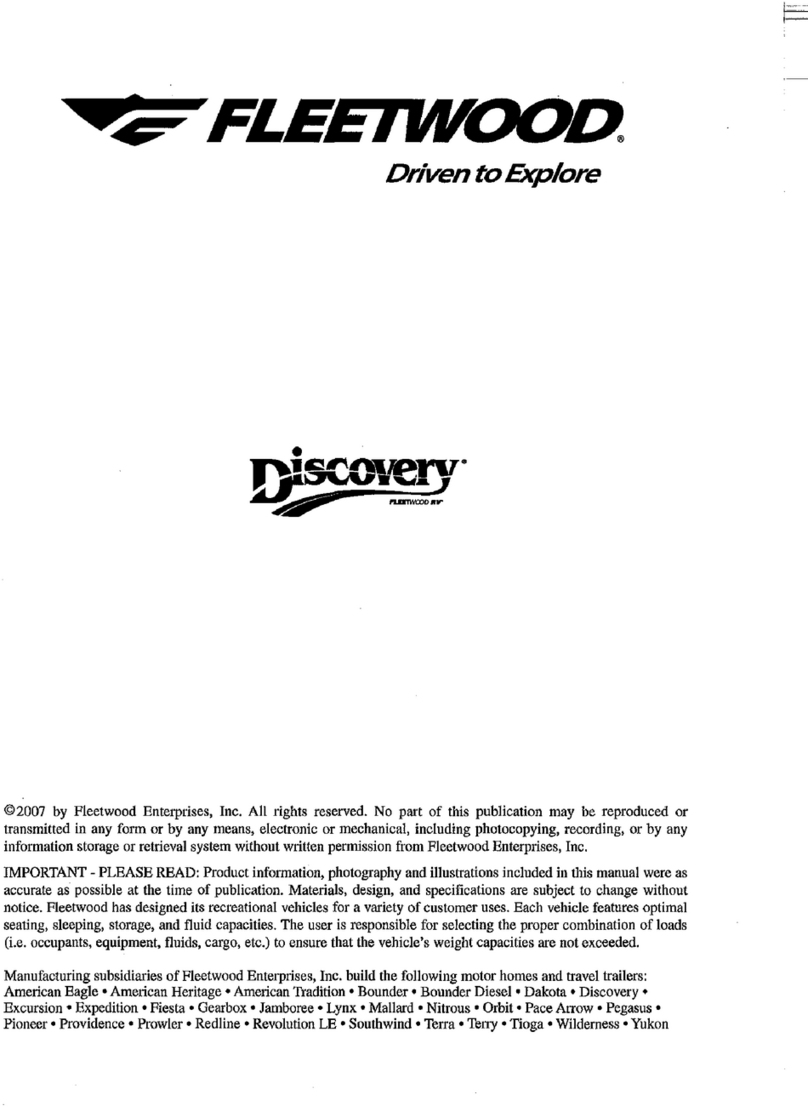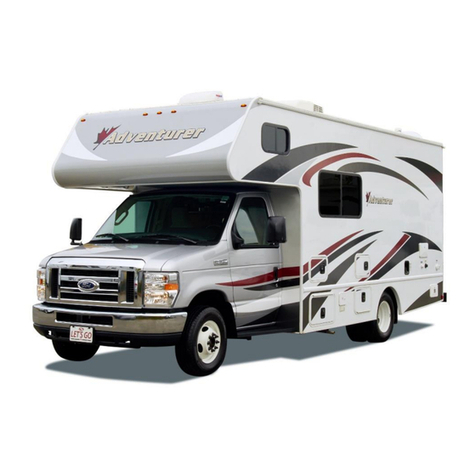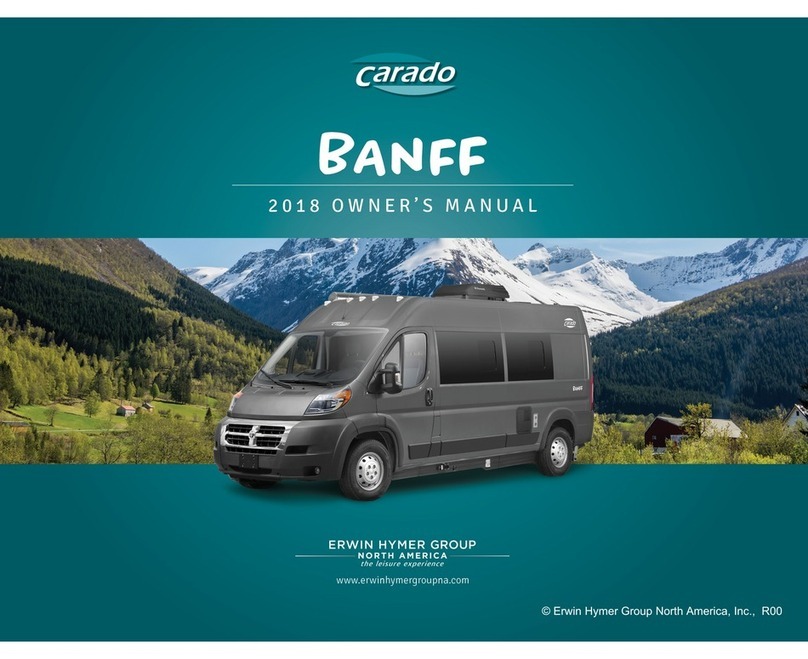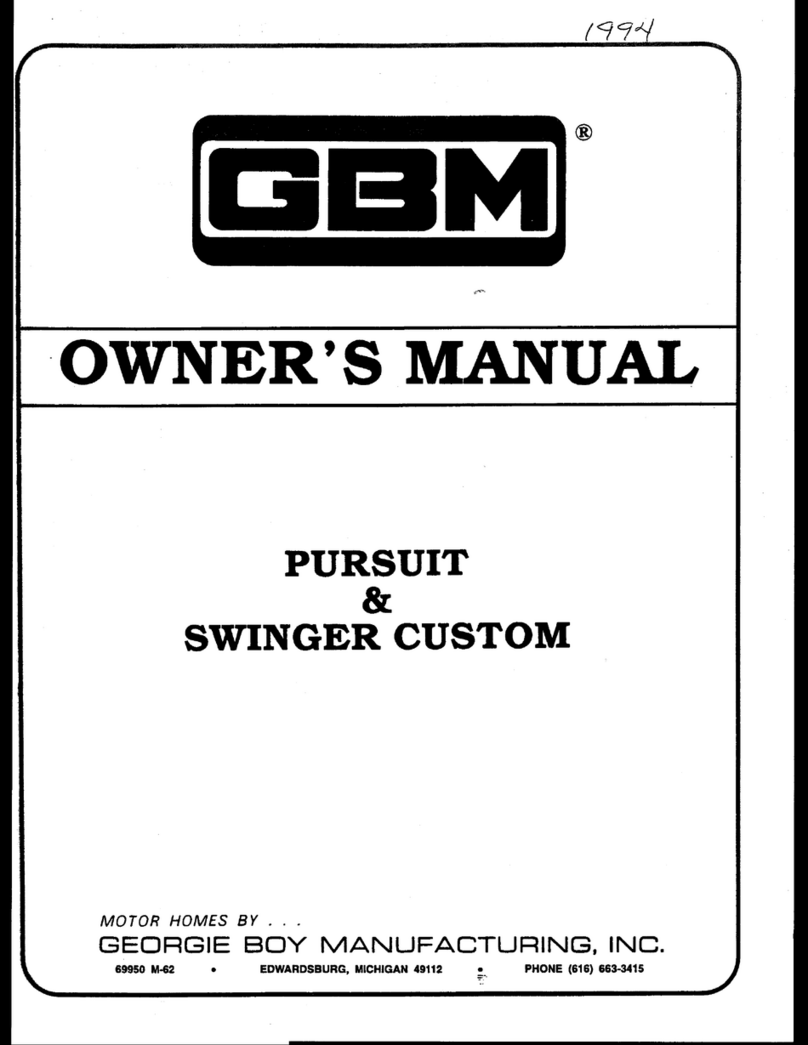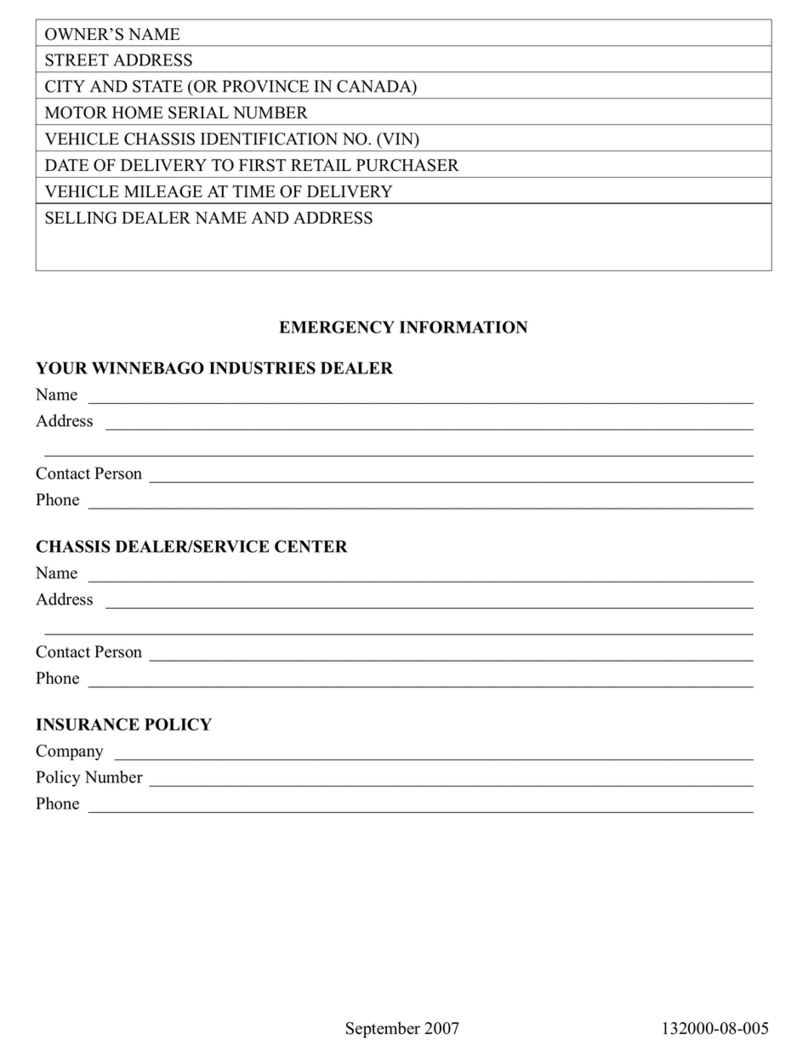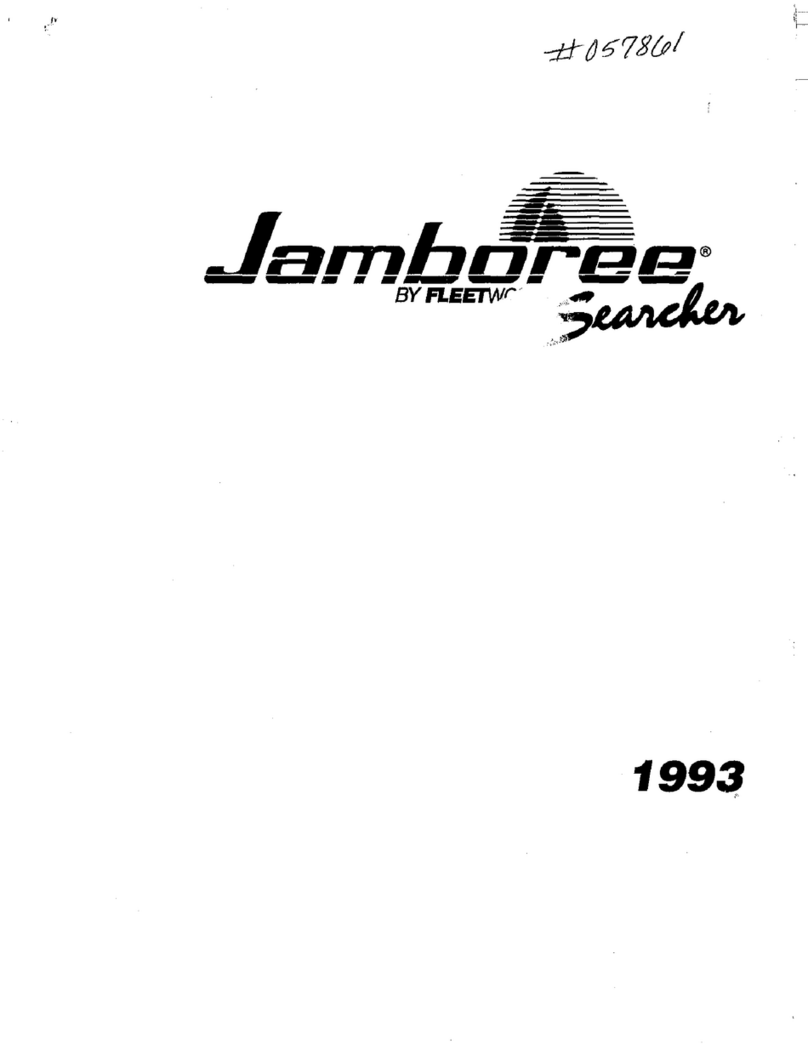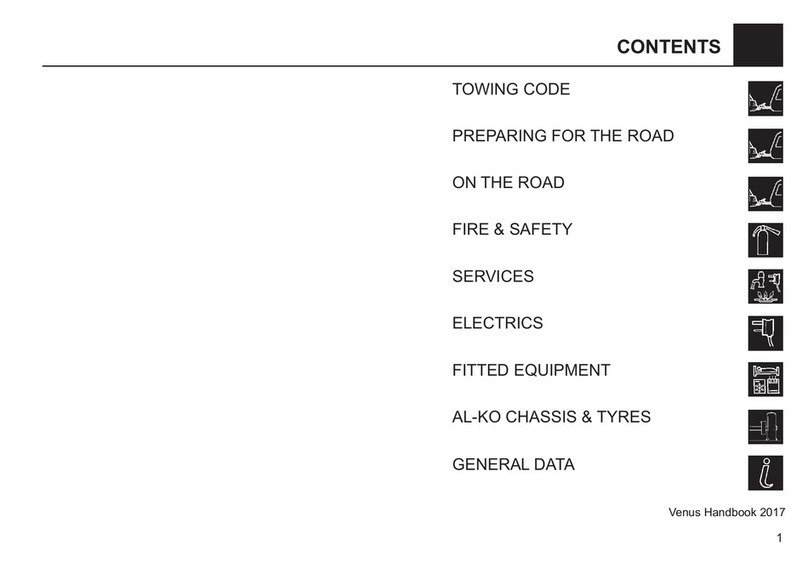Warranty
2
WARRANTY
All the illustrations and descriptive matter in
this handbook are intended to give a general
idea of the motorhome. Changing market and
supply situations and our policy of continuous
product development may prevent us from
maintaining the exact specifications detailed
in this handbook. We therefore reserve the
right to alter specifications as materials and
conditions demand.
Dealers are not agents of Swift Group Limited,
the manufacturer of Swift Group motorhomes
and have absolutely no authority to bind
the manufacturer by any express or implied
undertaking or representation.
All motorhomes (other than the engine, chassis
cab and associated parts referred to in this
handbook which are subject to the relevant
chassis manufacturer’s warranty) have a 3 year
SuperSure manufacturer’s warranty from the
date of purchase (or hire purchase), which is
subject to a chargeable annual service and
inspection being carried out at an authorised
Swift Group Service Centre.
During the warranty period, subject to the
exclusions set out in this section of the
handbook, the manufacturer, Swift Group Limited,
will repair (or at its option, replace) all defective
parts of the motorhome. For any engine, chassis
cab and associated parts warranty issues please
contact your local Fiat/Peugeot Agent.
The manufacturer will honour the warranty until
36 months from the date of sale, provided that
the motorhome has been serviced annually
within 90 days before or 60 days after each
anniversary of the original date of sale. The
third service must, however, be carried out
before the expiry of the 36 month period from
the original date of sale.
In the first 12 months the warranty
will cover:
Faults arising from a manufacturing defect but
not those which are a result of normal wear and
tear or those which relate to replacement light
bulbs and leisure battery.
Also not covered under the first year are faults
resulting from accidental damage or damage
caused by misuse of any component part of
the motorhome.
In the years two and three the warranty
will cover:
1. Water system; heater, fresh water tank,
water pump, water gauges, taps and
shower heads
2. Heating system and components
3. Main proprietary items ie. fridge,
toilet, cooker
4. Chassis and associated parts
5. Auxiliary electrics
6. Windows, excluding window furniture
and blinds
In years 2 and 3 the warranty will
specifically exclude:
• All soft furnishings
• Audio equipment
• Microwave
General terms applying to all three years of
the warranty period
The motorhome is not covered for:
• The failure of a component for reasons of
fair wear and tear.
• Damage resulting from accidents.
• Misuse of any component.
• Normal deterioration, corrosion, intrusion of
foreign or harmful bodies, lack of servicing
or negligence of any person other than
the Swift Group Limited which causes
stoppage of or impairment to the function
of any component of the motorhome.
• Replacement of parts which have reached
the end of their effective working life
because of age and/or usage.
• Cleaning or adjustment of any assemblies.
• Cosmetic finishes to kitchen sinks, cooker
tops, vanity units, shower trays.
